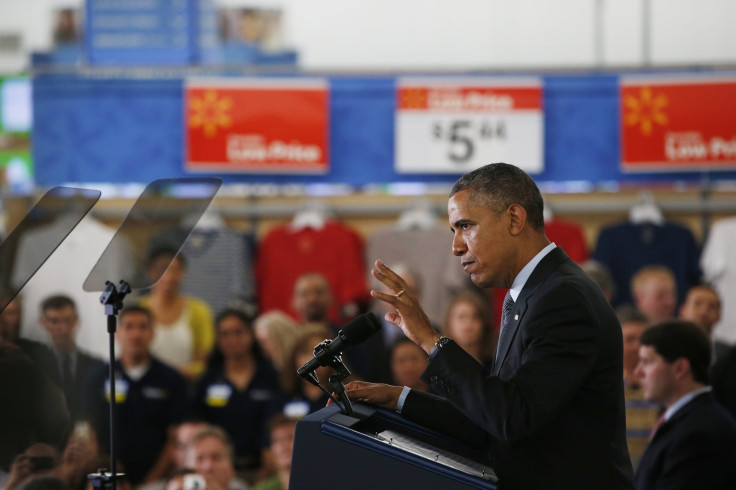Wal-Mart Earnings Preview: A ‘Challenging Quarter’ For Retail; Plans To Boost Grocery Sales

After a long, cold winter, Americans finally went outside -- or rather, they finally went into stores and started shopping. Strong retail sales in March raised hopes for the rest of the spring.
But in April, sales froze again. The U.S. Department of Commerce offered a glimpse into what to expect on Thursday morning when Wal-Mart Stores Inc. (NYSE:WMT), the world’s largest retailer, will announce its first-quarter earnings.
U.S. retail sales were almost flat in April at 0.1 percent. This comes after a 1.5-percent increase in March, the biggest gain in four years. The momentum slowed nearly to a stop last month, especially for furniture and consumer electronics, surprising analysts who had expected a 0.4 percent increase.
Economists polled by Thomson Reuters expect Wal-Mart to report a slight 1-percent decline in net income, to $3.74 billion, and a one-cent increase in earnings per share, to $1.15. Revenue is forecast to be up for the quarter by 1.8 percent to $116.25 billion. After a disappointing fiscal 2014, in which sales growth increased only 1.6 percent, Wal-Mart is not expected to report any big surprises, but it could wind up with some disappointments. In the first two weeks of February, sales in stores open at least a year declined, and the weather forced 200 stories to close.
“Inclement weather likely impacted February, making for a relatively challenging quarter for Wal-Mart and broader retail,” Matthew Fassler, managing director at Goldman Sachs, said in a research note.
Investors will be looking for how much of the company’s performance in the first three months of its 2015 fiscal year is a hangover from last year’s weak sales growth of 1.6 percent, down from 5 percent the previous year. They’ll also be looking for indications of what Wal-Mart is doing to reverse this slower growth.
“Wal-Mart’s grocery business has been down and people will want to see if that has stabilized,” said Joseph Feldman, senior managing director of securities research firm Telsey Advisory Group. “Another big factor to look for is e-commerce sales. They were up about 30 percent last year. People will be looking to see if that trend line continues.”
The company reported a 21 percent drop in its fourth-quarter profit, as smaller grocery store chains snatched some of Wal-Mart’s food customer base. The expiration of the federal unemployment insurance extension in November, which had been giving jobless Americans a little extra cash to buy food, also hurt fourth-quarter performance.
The company’s annual report in February for the first time cited changes to public assistance plans as a risk factor to future growth, a concern hit upon by labor activists that have accused the company of relying on welfare benefits to keep its payroll costs down by sending many of its employees to public assistance programs like food stamps and Medicaid.
How much the cut to food stamps is hurting Wal-Mart, whose customers tend to be less affluent, will be revealed on Thursday. In order to help stimulate grocery sales, the company’s new CEO Doug McMillon, who took the helm on Feb. 1, said he plans to open up to 300 Neighborhood Market grocery outlets and Wal-Mart Express convenience stores to go after consumers who prefer the smaller format, which will also help Wal-Mart open in areas that cannot accommodate its larger stores. Food inflation is rising, which is good for a store that emphasizes low prices.
On a brighter side for Wal-Mart’s bottom line is that much of the costs of closing stores in Brazil and China, and scaling back operations in India, have already been booked. Capital allocation should improve as the year progresses as the cost of that global restructuring, and the divesture in Mexico of the VIPs diner chain.
Wal-Mart will also likely outline more details of its efforts to bring low-cost organic food products to its stores shelves, a new business selling used computer games through its Gamestop chain, and a new financial services that allows store-to-store money transfers aimed at undercutting Western Union.
© Copyright IBTimes 2024. All rights reserved.












